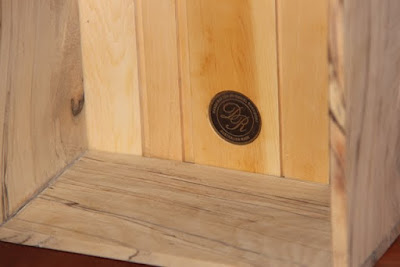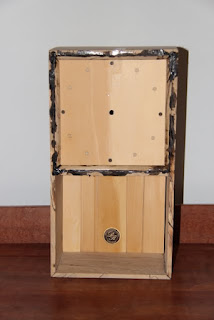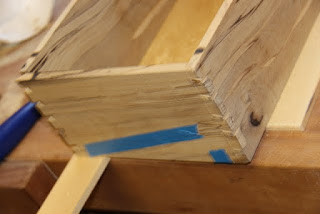Hey Dan,
My name is Andy and I'm about to begin making my own roubo workbench. I have been particularly interested in your build as I'll be using blackbutt from Mal Ward also (arrives Wednesday).
I was just wondering how you found working with blackbutt? And if you got much tearout when planing, and how you dealt with it? I have a few high angle planes which should help working with this dense timber.
Andy
Thanks for the email Andy. With a few details to go, officially my Roubo Workbench is a work in progress. That being said it remains a workhorse of my shop. I never considered it a work of art, it's a little rough, has some tear out (and now scratches), but is solid and works well.
There are pro's and con's to using Coastal Blackbutt. Advantages include being light in colour, solid, hard, and heavy (900kg m^3). Disadvantages include it's plain, solid, hard, and heavy (900kg m^3).
It was hard to work with tools. On average metals (such as my cheap chisels) at 25 degrees I found they would blunten within 5-10 blows. My planes would noticeably not cut as well after 5minutes of work. I would suggest using harder metals such as A2 steel if you have them, higher angle bevels (say 30-35), and sharpening often.
I only had one section that had significant fiddleback which was difficult to tame. My standard angle planes managed ok if I kept them sharp, a radius on the blade, and sole waxed. A high angle plane will reduce tear out but increase work on you and the blade. Like all things you'll need to trial it and see how you go.
Although I try to concentrate on hand-tools I would recommend using as many powertools has you have. I used a 3HP planer for machining and belt sander to solve some tear out issues.
Good luck with the project. I'm keen to hear how it goes. Let me know if you have any other questions.










































.png)